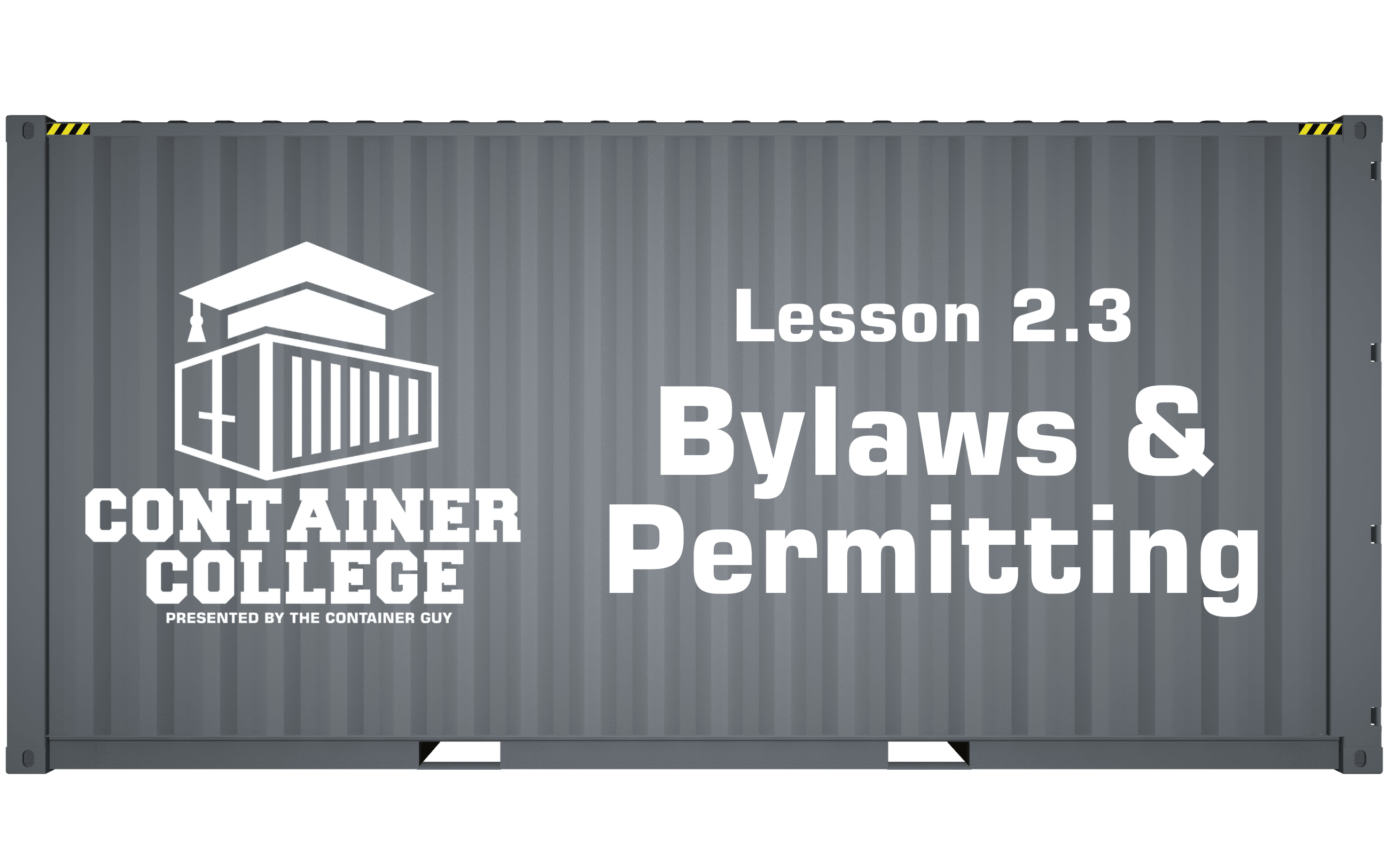
When it comes to building with shipping containers, especially if you're planning on building a container home, one of the first roadblocks many people face isn’t cutting steel or installing insulation—it’s paperwork. Before a container is ever dropped on-site, you’ll need to navigate zoning bylaws, permitting requirements, and setbacks. These rules vary depending on where you live, but understanding them early on will save you from costly mistakes and frustrating delays.
What Are Zoning Bylaws?
Zoning bylaws are local regulations that dictate how land can be used. Every property is classified into a specific zone: residential, commercial, industrial, agricultural, or a mix. These zones determine whether you’re allowed to place a shipping container at all, and if so, what you can legally do with it.
For example:
- A container used as a garden shed on a residential property might be permitted with minimal paperwork.
- A container converted into a coffee shop or office will likely fall under commercial zoning, requiring a development or building permit.
- Rural and agricultural properties often allow more flexibility but may still have restrictions on permanent foundations or utility hookups.
Always check your municipality’s zoning map before starting your project.
Understanding Setbacks
Even if your property is zoned correctly, you can’t always place a container wherever you want. Setbacks are minimum distances you must maintain between your structure and the property lines, roads, or other buildings.
Typical setbacks may require:
- Front yard: 20–25 feet from the road
- Side yard: 4–10 feet from the property line
- Rear yard: 10–20 feet from the back boundary
These distances protect neighboring properties, provide access for emergency services, and maintain consistent neighborhood layouts. If you’re too close, you may be forced to move your container—something no one wants after it’s already been delivered.
Permitting: The Critical Step
Whether or not you need a building permit depends on how your container will be used. Temporary storage may not need one, but anything involving utilities, structural modifications, or living space almost always does. When in doubt, call your local permitting office and ask. Submitting proper drawings and documents upfront usually makes the process smoother.
Tips Before You Begin
- Do your homework: Review your city or town’s bylaws online.
- Talk to a planner: A quick conversation with a zoning officer can save weeks of guesswork.
- Plan your layout: Measure setbacks before scheduling delivery so your container lands exactly where it should.
- Get it in writing: Always secure permits or approvals before spending money on modifications.
Final Thoughts
Shipping containers can be turned into amazing workshops, homes, and businesses, but only if they comply with local regulations. By understanding zoning and setbacks, you’ll ensure your project gets off the ground without legal or financial headaches.
At The Container Guy, we’ve seen too many builds stall because of overlooked permitting details. Take the time to check your bylaws and plan ahead—it’s just as important as framing, welding, or insulating.



